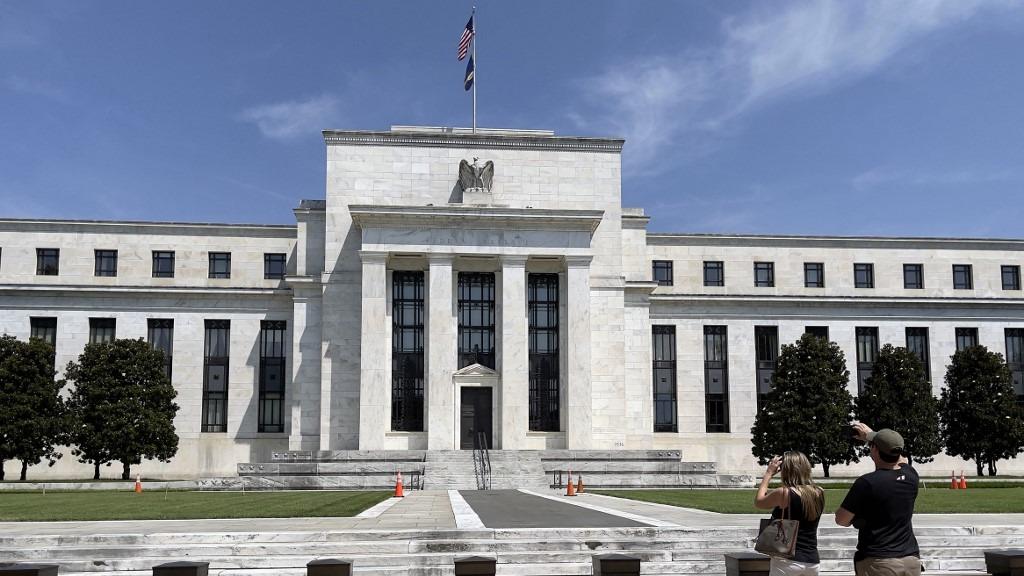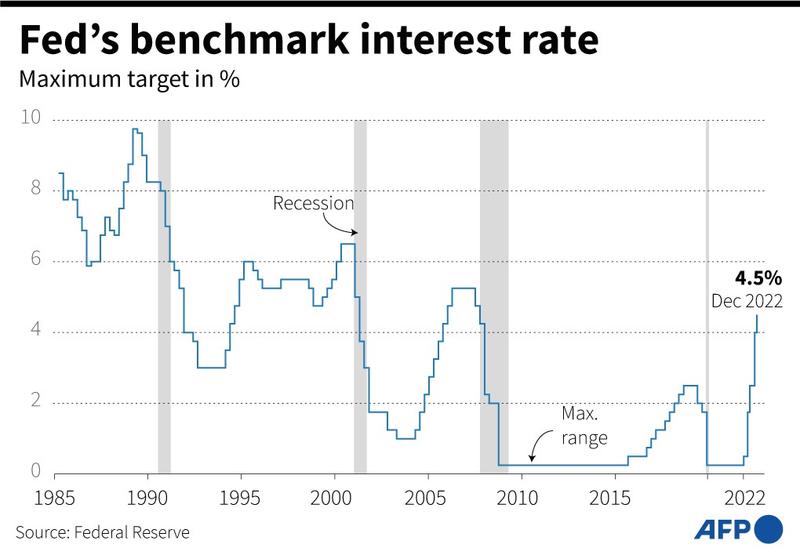 People take pictures of the Federal Reserve building in Washington, DC on Aug 6, 2021. (DANIEL SLIM / AFP)
People take pictures of the Federal Reserve building in Washington, DC on Aug 6, 2021. (DANIEL SLIM / AFP)
BENGALURU - The US Federal Reserve will end its tightening cycle after a 25-basis-point hike at each of its next two policy meetings and then likely hold interest rates steady for at least the rest of the year, according to most economists in a Reuters poll.
Fed officials broadly agree the US central bank should slow the pace of tightening to assess the impact of the rate hikes. The Fed raised its benchmark overnight interest rate by 425 basis points last year, with the bulk of the tightening coming in 75- and 50-basis-point moves.
As inflation continues to decline, more than 80 percent of forecasters in the latest Reuters poll, 68 of 83, predicted the Fed would downshift to a 25-basis-point hike at its Jan 31-Feb 1 meeting. If realized, that would take the policy rate - the federal funds rate - to the 4.50-4.75 percent range.
 This AFP graphic dated Dec 14, 2022 shows a chart on the changes in the benchmark interest rates of the United States Federal Reserve from 1985 to 2022.
This AFP graphic dated Dec 14, 2022 shows a chart on the changes in the benchmark interest rates of the United States Federal Reserve from 1985 to 2022.
The fed funds rate was expected to peak at 4.75-5.00 percent in March, according to 61 of 90 economists in a Reuters poll. That matched interest rate futures pricing, but was 25 basis points lower than the median point for 2023 in the "dot plot" projections issued by Fed policymakers at the end of the Dec 13-14 meeting
The remaining 15 see a 50-basis-point hike coming in two weeks, but only one of those was from a US primary dealer bank that deals directly with the Fed.
The fed funds rate was expected to peak at 4.75-5.00 percent in March, according to 61 of 90 economists. That matched interest rate futures pricing, but was 25 basis points lower than the median point for 2023 in the "dot plot" projections issued by Fed policymakers at the end of the Dec 13-14 meeting.
"US inflation shows price pressures are easing, yet in an environment of a strong jobs market, the Federal Reserve will be wary of calling the top in interest rates," noted James Knightley, chief international economist at ING.
The expected terminal rate would be more than double the peak of the last tightening cycle and the highest since mid-2007, just before the global financial crisis. There was no clear consensus on where the Fed's policy rate would be at the end of 2023, but around two-thirds of respondents had a forecast for 4.75-5.00 percent or higher.
ALSO READ: Fed to size up next rate hike with eye on inflation
The interest rate view in the survey was slightly behind the Fed's recent projections, but the poll medians for growth, inflation and unemployment were largely in line.
Inflation was predicted to drop further, but remain above the Fed's 2 percent target for years to come, leaving a relatively slim chance of rate cuts anytime soon.
In response to an additional question, more than 60 percent of respondents, 55 of 89, said the Fed was more likely to hold rates steady for at least the rest of the year than cut. That view lined up with the survey's median projection for the first cut to come in early 2024.
However, a significant minority, 34, said rate cuts this year were more likely than not, with 16 citing a plunge in inflation as the biggest reason. Twelve said a deeper economic downturn and four said a sharp rise in unemployment.
 People shop at a supermarket in San Mateo, California, the United States, Sept 13, 2022. (PHOTO / XINHUA)
People shop at a supermarket in San Mateo, California, the United States, Sept 13, 2022. (PHOTO / XINHUA)
In response to an additional question, more than 60 percent of respondents, 55 of 89, said the Fed was more likely to hold rates steady for at least the rest of the year than cut. That view lined up with the survey's median projection for the first cut to come in early 2024
"The Fed has prioritized inflation over employment, therefore only a sharp decline in core inflation can convince the FOMC (Federal Open Market Committee) to cut rates this year," said Philip Marey, senior US strategist at Rabobank.
"While the peak in inflation is behind us, the underlying trend remains persistent ... we do not think inflation will be close to 2 percent before the end of the year."
In the meantime, the Fed is more likely to help push the economy into a recession than not. The poll showed a nearly 60 percent probability of a US recession within two years.
While that was down from the previous poll, several contributors had not assigned recession probabilities to their forecasts as a slump was now their base case, albeit a short and shallow one as predicted in several previous Reuters surveys.
READ MORE: Hawkish Fed sparks concern in Asia with continuing rate hikes
The world's biggest economy was expected to grow at a mere 0.5 percent this year before rebounding to 1.3 percent growth in 2024, still below its long-term average of around 2 percent.
With mass layoffs underway, especially in financial and technology companies, the unemployment rate was expected to rise to average 4.3 percent next year, from the current 3.5 percent, and then climb again to 4.8 percent next year.
While still historically low compared to previous recessions, the forecasts were about 1 percentage point higher than a year ago.


